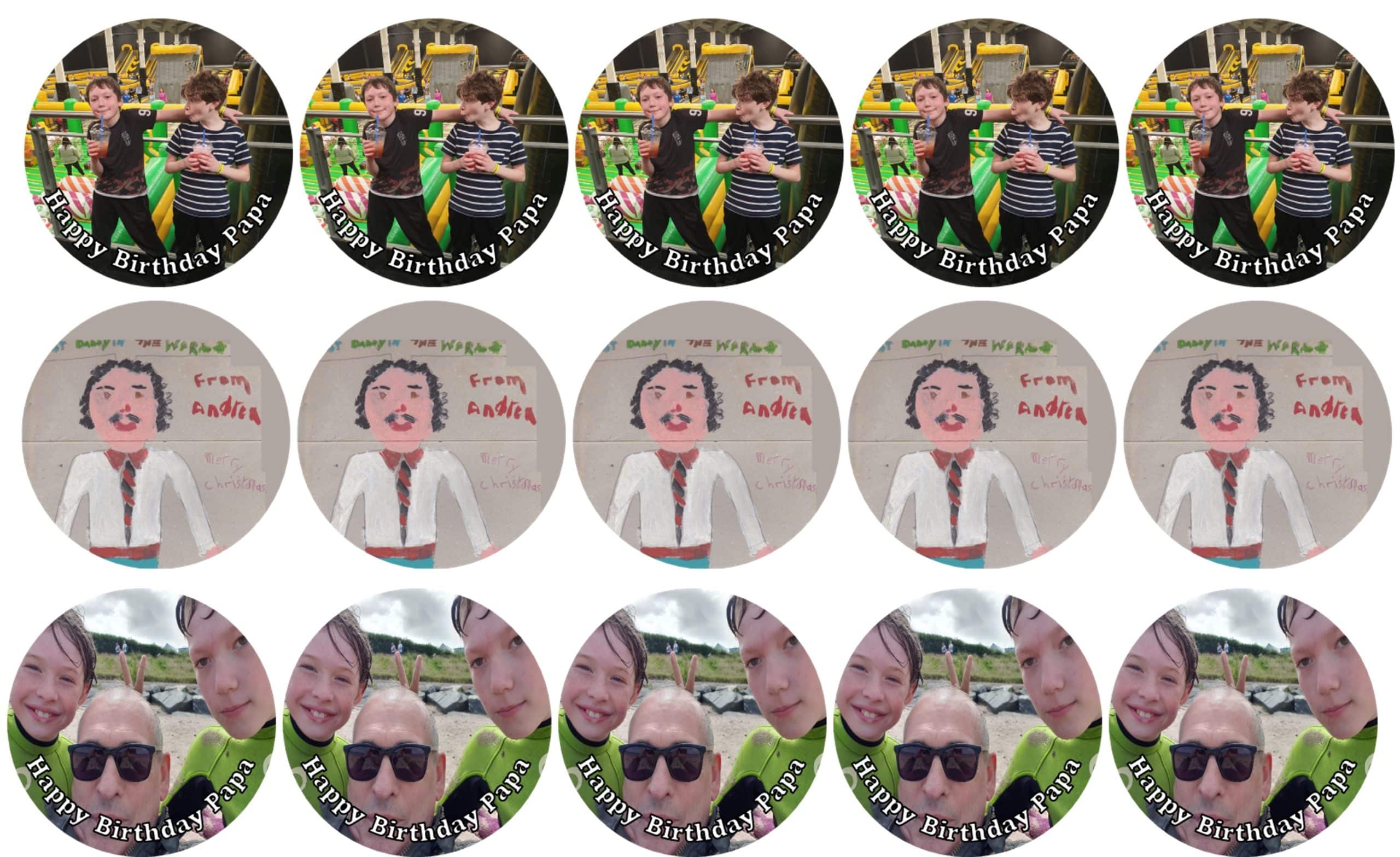Own image cupcake toppers

Customise your cake with an edible icing sheet print is one of the easiest way of turning your cake into a work of art has never been easier, thanks to printed icing and wafer sheets. Edible printed icing sheets are made from a thin layer of icing that is applied to a backing sheet. They can be printed with any design, picture, or text that you want. Edible icing sheets are ideal for decorating cakes, cupcakes, and other desserts, as they can be easily cut into any shape or size and they adhere well to a variety of surfaces.
Printed Wafer Paper, on the other hand, is made from potato starch, vegetable oil, and water. It is a thin and translucent material that is available in various sizes and shapes. Printed wafer paper can be used to decorate cakes, cupcakes, cookies, drinks and other desserts, and it is ideal for creating delicate and intricate designs. Wafer paper is more flexible than icing sheets, so it is less likely to crack or break. However, it may be more difficult to handle, especially when it is wet, as it can become soft and sticky.
Both edible printed icing sheets and printed wafer paper have their own unique characteristics, and the choice between the two will depend on the specific requirements of your cake decoration project.
The sheets are printed on using edible ink printer which can print any design, picture, or text that you want. This allows you to decorate your cake with anything from a personal message to a full-colour image. Here’s how to apply a printed sheets to your cake:
ICING SHEET
Prepare your cake: Before you start, make sure your cake is completely cooled and has a smooth surface. If the icing or buttercream on your cake has any bumps or rough spots, gently smooth them out with a small offset spatula or icing smother. The smoother and level your cake is the better your cake topper will look.
Cut the icing sheet: Measure the size of the area you want to cover on your cake and cut the icing sheet accordingly. You can use scissors or a sharp knife to cut the icing sheet.
Moisten the cake: Lightly dampen the area of the cake where you want to apply the icing sheet. This will help the icing sheet adhere to the cake. Be careful not to use too much moisture, as this could cause the icing sheet to wrinkle or bubble and may make the ink run.
Apply the icing sheet: Peel the backing off the icing sheet and place it on the moistened area of the cake. Gently smooth out any air bubbles and adjust the placement of the icing sheet as needed.
Seal the edges: To make sure the icing sheet stays in place, gently press down on the edges of the sheet. You can also use a small amount of frosting or edible glue to secure the edges if needed.
WAFER PAPER
Prepare your cake: Before you start, make sure your cake is completely cooled and has a smooth surface. If the icing or buttercream on your cake has any bumps or rough spots, gently smooth them out with a small offset spatula or icing smother. The smoother and level your cake is the better your cake topper will look.
Prepare the Wafer Paper: Before you start applying the wafer paper to your cake make sure it is completely flat and not wrinkled. If it is not flat place something flat and heavy on top for a while this will flatten wafer paper.
Cut the Wafer Paper to the Right Size: Using a sharp knife or scissors, cut the wafer paper to the size and shape that you want to use for your cake. Keep in mind that you can also cut wafer paper into various shapes and designs using a paper cutter/punch or scissors.
Brush Edible Glue onto the Cake: Next, apply a thin layer of edible glue to the surface of the cake where you want to place the wafer paper. You can use either store-bought edible glue or make your own by mixing a small amount of water with a little bit of glucose syrup.
Apply the Wafer Paper to the Cake: Carefully place the wafer paper onto the cake, ensuring that it adheres evenly to the surface. Use a clean, dry brush or kitchen roll to gently smooth out any wrinkles or bubbles.
Seal the Edges: To prevent the edges of the wafer paper from lifting or curling, use a small amount of edible glue to seal the edges to the cake. This will also help to keep the wafer paper in place for a longer period of time.
In conclusion, applying a printed icing sheet or wafer paper to your cake is a simple and effective way to customise your cake add a custom design to your baked creations. Whether you want to personalise a special occasion or create a unique cake design, a printed icing sheet is an easy and delicious way to do it.